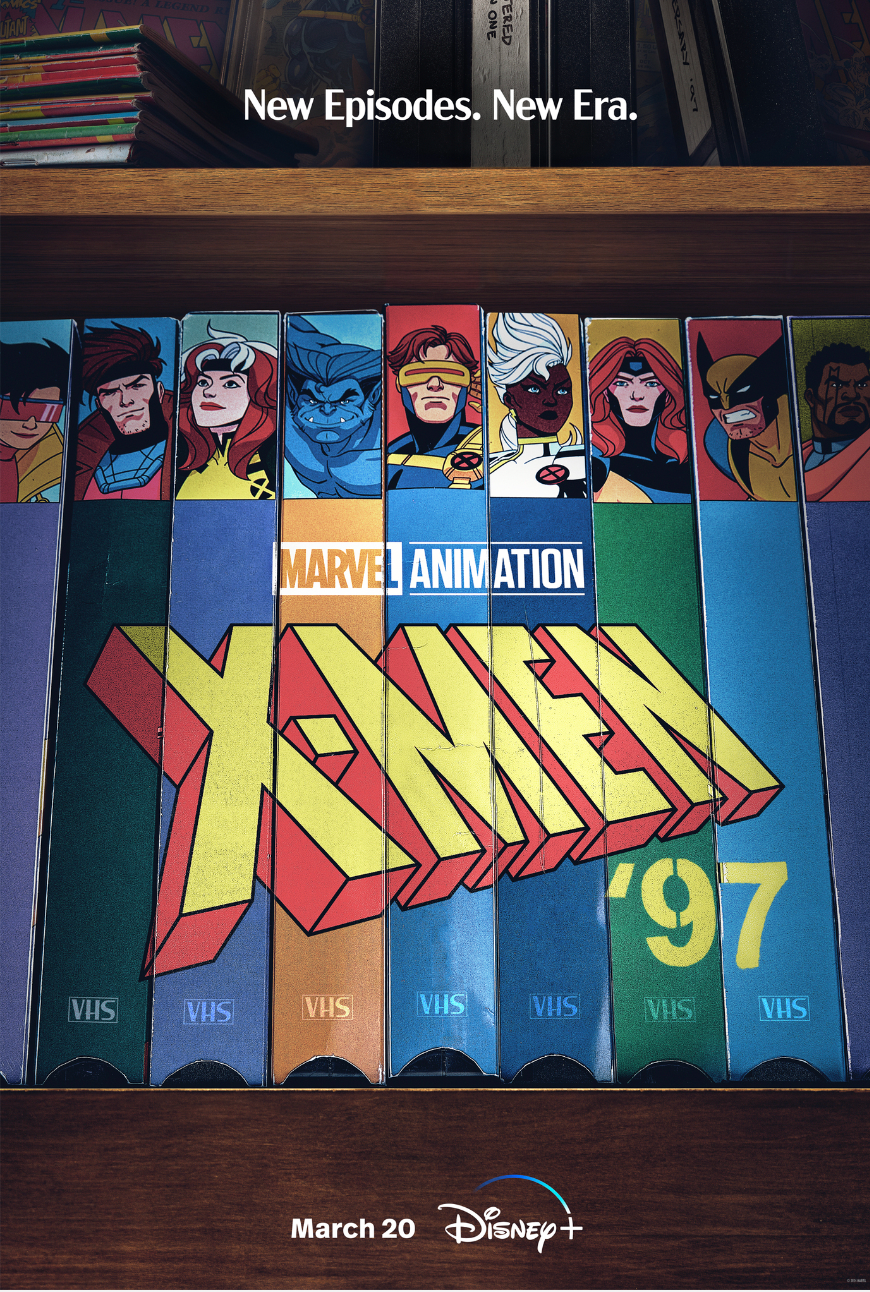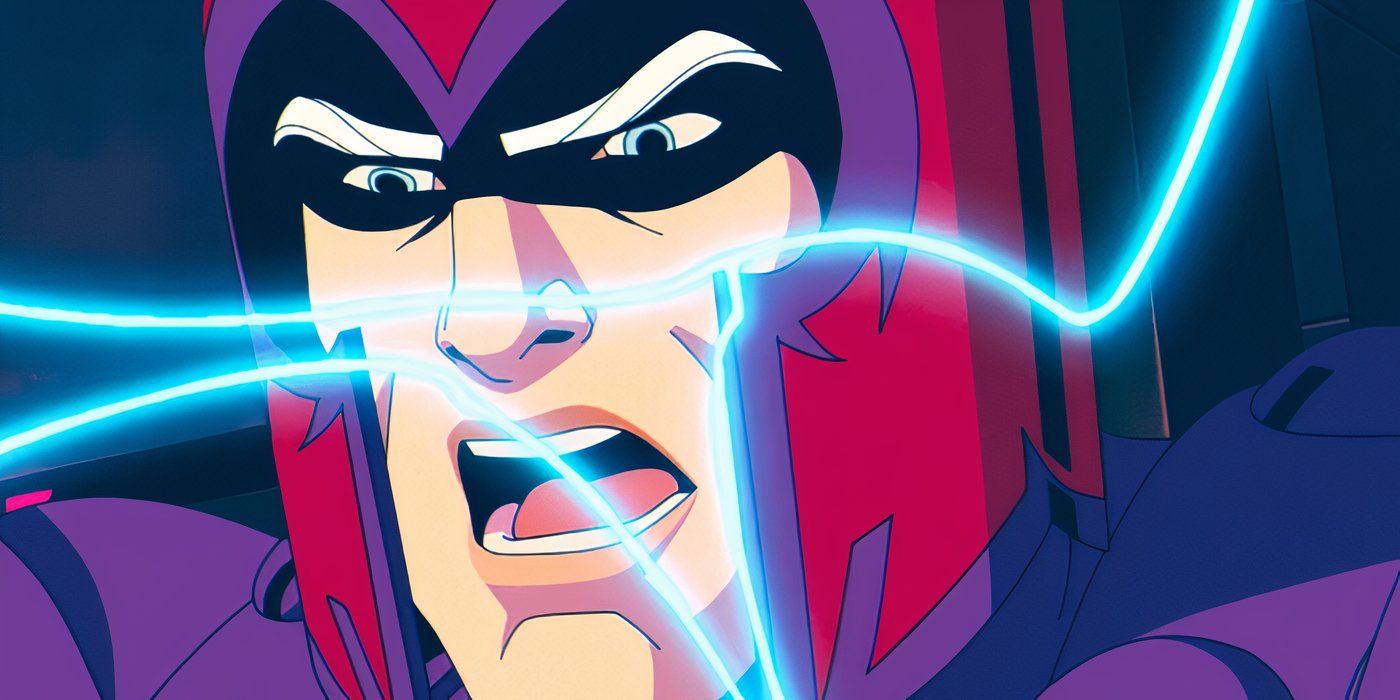Justice for this underrated member of the X-Men!
Editor’s Note: This article contains spoilers for all episodes of Season 1 of X-Men ’97.
The Big Picture
-
X-Men ’97
has shown that it’s not afraid to take narrative risks to reinvent the typical X-Men story. - Morph’s limited appearance in
X-Men ’97
is groundbreaking for LGBTQ+ representation. - Morph’s trauma with sentinels and non-binary identity could have been explored more in the series.
X-Men ’97 breaks all of Marvel’s rules in the best possible way. By taking narrative risks as dramatic as killing Gambit and as heartbreaking as the destruction of Genosha, the series wastes no time in demonstrating just how far it is willing to go to reinvent the typical X-Men story, a sentiment best represented by the team’s resident shapeshifter, Morph (JP Karliak). Confirmed by former showrunner Beau DeMayo to be non-binary and use they/them pronouns, Morph’s inclusion in X-Men ’97 is groundbreaking for a universe whose LGBTQ+ representation has been sorely lacking, though their appearance in the series is still too limited to take advantage of the character’s full potential.
Originally introduced to fans in 1992’s X-Men: The Animated Series as an original character based on Marvel Comics’ Changeling, Morph experienced a rocky tenure on the show at best. Killed in a sentinel attack during the second part of the show’s 2-episode “Night of the Sentinels” premiere, Morph is presumed dead until the start of the second season, when it is revealed that Morph was resurrected and subjected to mind control by Mister Sinister (Christopher Britton). After enlisting Professor Xavier’s help in freeing themself from the villain’s grasp, Morph eventually goes on to rejoin the X-Men in time for the original show’s finale, seemingly setting up a prominent place for the shapeshifter in any future continuation. However, as X-Men ’97 has proven, this setup fell short in the sequel series’ most important story.

X-Men ’97
A band of mutants use their uncanny gifts to protect a world that hates and fears them; they’re challenged like never before, forced to face a dangerous and unexpected new future.
- Release Date
- March 20, 2024
- Cast
- Jennifer Hale , Cal Dodd , Chris Potter , Catherine Disher , Adrian Hough , Ray Chase , Lenore Zann
- Main Genre
- Animation
- Seasons
- 1
- Number of Episodes
- 10
- Streaming Service(s)
- Disney+
- Franchise(s)
- X-Men
Morph Would Have Been Perfect for ‘X-Men ’97’s Sentinel Arc
Given X-Men ’97’s renewed focus on Boliver Trask and Henry Gyrich’s ill-fated sentinel program, it would have been natural for Morph to assume an even larger role in combating the minds behind Master Mold. As the only member of the X-Men to have died at the hands of a sentinel in the original series, they have more invested in the destruction of the mutant-hunting androids than most on the team. Moreover, as Morph proved in X-Men Season 4, Episode 6, “Courage,” Morph had overcome their fear of the original sentinels by the end of the show. By choosing to save their friends instead of fleeing from a salvaged Master Mold, Morph proved they could face the worst of their sworn enemy, demonstrating that Morph was best suited to fight Bastion in X-Men ’97.
As someone traumatized by their encounter with the sentinels, Morph’s fraught relationship with the machines can’t be understated. Morph flashes back to the night of their death repeatedly throughout the original animated series, and the image of their blasted body skidding across the grass with their X-Men suit in tatters will forever be etched in fans’ minds. Yet it is this deep connection to the sentinels that would have made Morph ideal to lead the charge against them in X-Men ’97’s first season. Unlike Jubilee, Storm, and other X-Men characters who are imprisoned by the sentinels during X-Men’s “Night of the Sentinels” episodes and Season 1, Episode 7’s horrifying “Slave Island,” Morph lost everything from machines designed to destroy all that was different.
Having overcome this sentinel-induced pain, Morph’s contributions to X-Men ’97’s first season could have been endless. With the resurgence of Master Mold and the onset of Bastion’s Prime Sentinel program causing so much devastation, Morph could have spoken about the personal cost of the sadistic robots. Their own brush with death would have made them ideal for sympathizing with the victims of Genosha, and it would have been so gratifying to see X-Men’s most heartbreaking arc pay off by having Morph personally comfort those who lost loved ones after Episode 5 changed everything. Morph could have even addressed the United Nations, though educating the world about the cost of its intolerance is far from the only way Morph could have benefited from increased screentime.

Magneto Said What We Were All Thinking in ‘X-Men ’97’s Latest Episode
“Oh, how I’ve waited to say these two words to you, old friend.”
Morph Can Be a Real-World Inspiration to Fans of the Show
In many ways, the X-Men universe is the perfect place for showcasing a character as complex and unique as Morph. A franchise that constantly fights for the rights of those who are different and preaches universal acceptance, Morph’s intimate struggles with trauma and their fractured mind speak to the dark costs of being marginalized, especially for fans struggling with their gender identity. As a non-binary character who manages to rise above the wounds of their past, Morph is proof that it is possible for Marvel’s LGBTQ+ characters to earn their own happy endings, but X-Men ’97 needs to do more with Morph’s joy in order to showcase just how uplifting the character could be.
The series doesn’t ignore Morph’s happiness entirely. In fact, X-Men ’97 is the happiest Morph has ever been. Whether it’s providing fans with a steady stream of wild cameos whenever they shapeshift or making Wolverine laugh again, Morph very much seems back to their mischievous old self by the time the continuation begins, but it’s disappointing that Morph is oftentimes only played for comic relief. Aside from addressing their past history with Sinister briefly in Season 1, Episode 3, “Fire Made Flesh,” X-Men ’97 doesn’t take advantage of Morph’s emotional past to give them a more compelling present. Too often the character is in the background of scenes, and they haven’t yet been given a storyline as developed as those given to side characters like Jubilee.
This creative oversight is especially disappointing because of how Morph’s struggles relate directly to those experienced by the LGBTQ+ community. Throughout various media, shapeshifting is often intrinsically linked to non-binary gender identities, but Morph’s character is rare because they are also shown experiencing a struggle to maintain their sense of self. Morph’s feelings of betrayal and abandonment following being left for dead by the X-Men connect to the isolation that many LGBTQ+ community members face in their everyday lives. Moreover, Mister Sinister’s past hold over Morph’s mind is reminiscent of the way many non-binary people experience dysphoria, with Morph’s powers fluctuating and their ability to function limited by the forced actions of whatever the classic villain considered right.
By embracing the LGTBQ+ parallels to Morph’s story and expanding these connections in future storylines, X-Men ’97 can be at the forefront of positive representation in Marvel’s multiverse of properties. This representation can finally give non-binary fans a strong character that reflects their own lived experiences, as well as establish Marvel’s commitment to the inclusionary values of its characters. Though with the series’ first season recently concluding its violent three-part finale, fans will have to wait a little longer to see if the show stops glossing over a character who can inspire positive change as effectively as they crack jokes.
X-Men ’97 is available to stream on Disney+ in the U.S.
This article was originally published on collider.com



